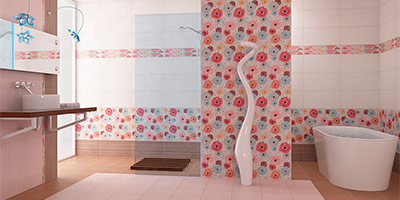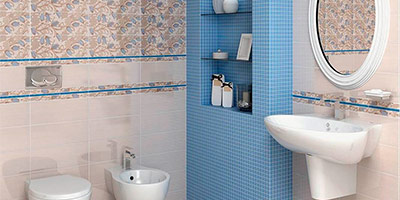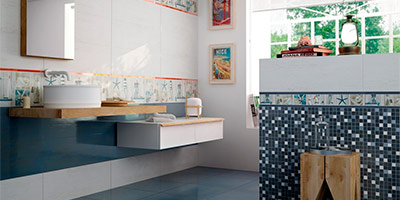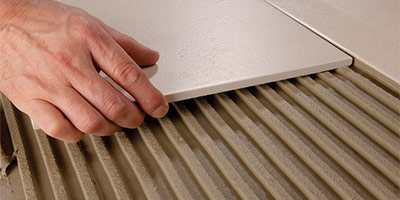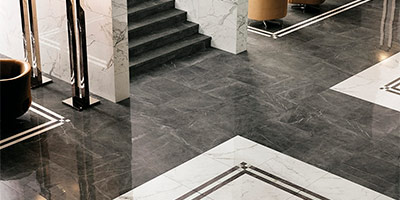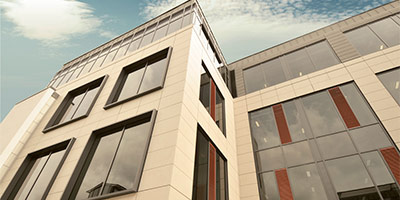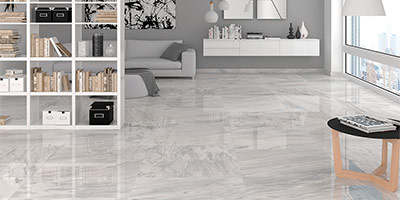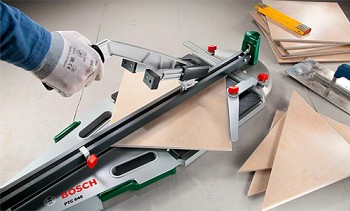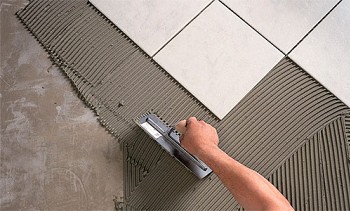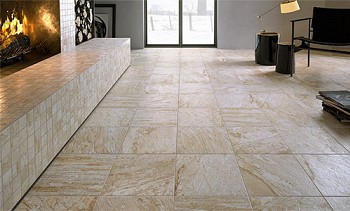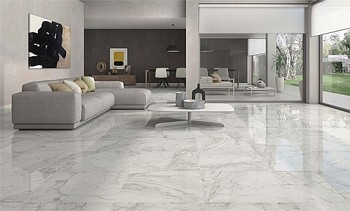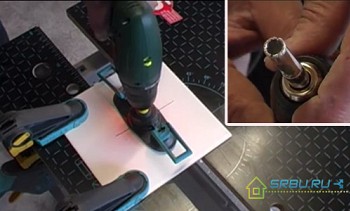Porcelain tile or ceramic tile - which is better to use
Porcelain tiles and ceramic tiles are among the most sought-after finishing materials. However, the question of what exactly to prefer for finishing a house, apartment or office space, remains relevant. It is difficult to say exactly which is better - porcelain tiles or ceramic tiles, since each material has its own characteristics. In this article, we will compare these materials and learn about the best options for using ceramic tiles and porcelain stoneware.
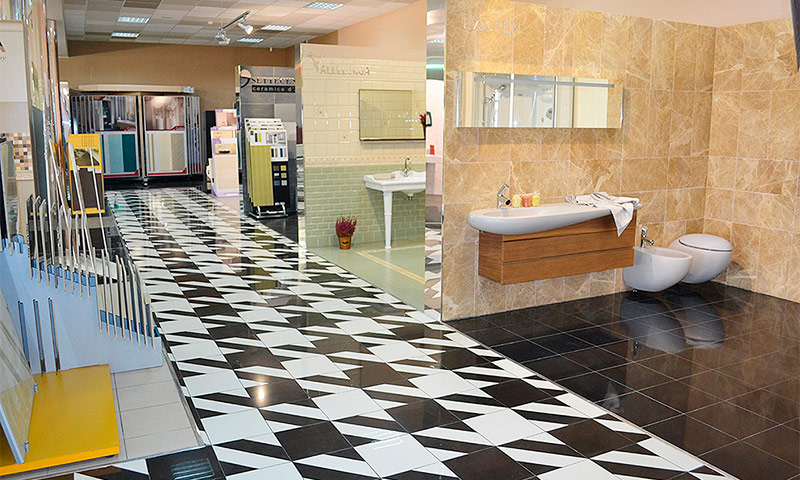
Content:
The difference in the technology of manufacturing ceramic tiles and porcelain tiles
Features and properties of porcelain stoneware and ceramic tiles are determined primarily by the technology of manufacturing materials. To better understand the characteristics and logic of their application, it is worth a little more familiar with the nuances of the production of tiles of both types.
Ceramic tile production
For the manufacture of ceramic tiles, raw materials are used, which include the following components:
#1. Clay. For the manufacture of tiles using refractory or refractory grades of clay. In this case, the first option is preferable, since it allows to obtain a more durable material.
#2. Quartz sand. It is necessary for increased strength and maintaining the shape of the tiles after firing.
#3. Feldspar compounds are a mixture of minerals, sodium and potassium aluminosilicates. Provide a raw material viscosity sufficient to form and increase the strength of the material under the influence of high temperatures.
If necessary, the raw materials are supplemented with various additives - plasticizers, fluxes and vapor-forming components for quick removal of moisture.
In general, the production of ceramic tiles is carried out in several stages:
- preparation of raw materials, mixing of the main components and additives in the right proportions;
- molding products, pressing under a pressure of about 400 kg / cm2;
- drying pressed tiles;
- glazing tiles (to give the material the desired color);
- firing at temperatures from 900 to 1300 degrees.
After processing the tiles, sorting is performed - the uniformity of firing and the thickness of each product are evaluated, the failed elements are rejected.
There are two cycles of ceramic tile production - with one or with double firing. Double-fired material, also known as bicotura, twice exposed to high temperatures - to create a base and fix enamel. This tile is more fragile and porous, and therefore suitable only for wall decoration in rooms.
Ceramics that have passed one firing cycle, but after pressing under increased pressure and at higher temperatures (up to 1200 degrees), are called monocottura. This tile is thicker and more durable, which allows it to be used both for creating flooring and for interior and exterior wall decoration.
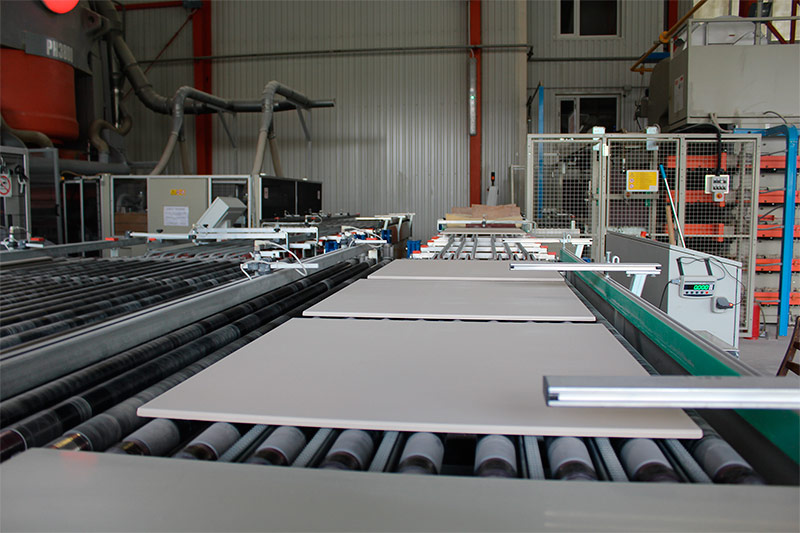
Porcelain production
For the production of porcelain stoneware, a press powder obtained from a slip is used.
This is what plastic porcelain mix is called, consisting of the following components:
#1. White clay (kaolin). It is necessary for high viscosity, strength and fire resistance of finished products.
#2. Illite clay (formation of sheet silicates). It reports great plasticity in the process of forming products, and subsequently allows you to get a homogeneous material with high mechanical stability.
#3. Feldspar. Provides resistance to porcelain stoneware against aggressive chemicals.
#4. Quartz sand. Necessary for wear resistance and hardness.
#5. Mineral dyes (introduced into the finished press powder).
After the absolute homogeneity of the raw material is achieved, the production of porcelain stoneware successively passes through several stages:
- molding tiles with continuous pressing under high pressure (500 kg / cm2) and active drying;
- drawing or glazing;
- firing products in furnaces at a temperature of at least 1200 degrees;
- polishing or polishing tiles (for certain types of porcelain tiles).
With strict adherence to the technology, porcelain tile acquires a special, incredibly strong, smooth and uniform structure, without any foreign inclusions and internal voids.
The similarities between the production of ceramic tiles and porcelain tiles are obvious. However, even if small, but still the difference in the components for raw materials and the use of higher pressure and temperature in the manufacture of porcelain stoneware tell even more differences between the materials - we will talk about them below.
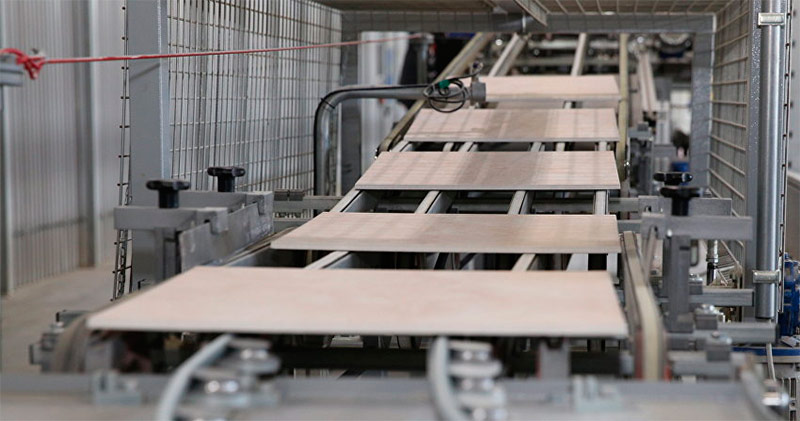
Comparison of ceramic tiles and porcelain tiles in the main parameters
So that the choice of material was ultimately correct, it is necessary to imagine the differences and similarities of tiles and porcelain stoneware for the most important indicators. In order to make the comparison more objective, as an opponent for porcelain stoneware, we will choose a tile called monocottur. It is not right to compare porcelain stoneware with bicotour tiles, since this material obviously loses to porcelain stoneware.
Hardness and strength of porcelain stoneware and ceramic tiles
The hardness of porcelain is at a high level and on the Mohs scale can have a value of 8, which is harder than natural granite. This allows you to use it in places that are characterized by high mechanical stress. However, ceramic tiles of the same thickness are practically not inferior to him, but have a lower hardness index.
The strength of the material is influenced by its structure, therefore porcelain tile that is uniform throughout the thickness is advantageous because it demonstrates high strength to mechanical loads. More porous types of tiles are relatively fragile - a point impact on a material with a heavy object can lead to the formation of noticeable cracks.
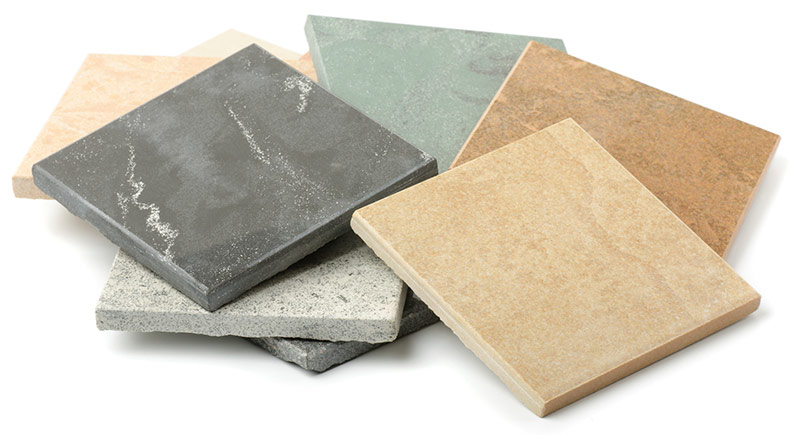
Wear resistance and loss of appearance
Abrasion resistance for both porcelain stoneware and ceramic tiles is assessed on the PEI scale - according to this indicator, the materials are divided into 5 classes:
- PEI I is the minimum stability class. Both materials of this class can be used for dining rooms, bathrooms and bedrooms - in a word, rooms with minimal traffic and a stable temperature.
- PEI II. Tiles of this class are slightly more resistant to abrasion, which allows them to be used for dining rooms, kitchens and bathrooms in apartments and cottages.
- PEI III. Optimal for verandas, terraces, loggias, halls and balconies in cottages and large apartments ..
- PEI IV. Porcelain tiles and tiles of this class are highly resistant to abrasion, due to which they are used for flooring in hotels, cafes and restaurants, stairwells of houses and offices.
- PEI V. Materials are suitable for places with high traffic because they have maximum wear resistance. But there are nuances: ceramic tiles of this class are more often used for restaurants, clinics and business centers, while porcelain stoneware is more popular when decorating halls and stairs in hypermarkets, shopping centers, airports and railway stations.
Due to the difference in manufacturing technology, ceramic tiles are still more prone to abrasion and fading of the color of the picture. In the production of porcelain stoneware, coloring pigments are added directly to the raw materials, due to which the color turns out to be persistent and does not change with time.
Comparing which is better - porcelain tiles or ceramic floor tiles, it is worthwhile to focus not only on abrasion resistance, but also the slippery of the material.So, matte, lappated and satin porcelain stoneware are safer because they have a minimal tendency to slip - in contrast to a smoother and, as a rule, glossy ceramic tile.
Frost resistance
Frost resistance of ceramics is determined by such an indicator as water absorption. Due to its homogeneous and non-porous structure, porcelain stoneware has a water absorption coefficient of 0.05% and lower and thereby demonstrates high frost resistance. This indicator can vary from 100 to 300 cycles.
As for ceramic tiles, the minimum rate of water absorption for its most dense varieties is 1%, and for bicotura it is 10%. As a result, the tile's cold resistance is 50 cycles. Thus, porcelain stoneware is a more suitable solution for outdoor decorating.
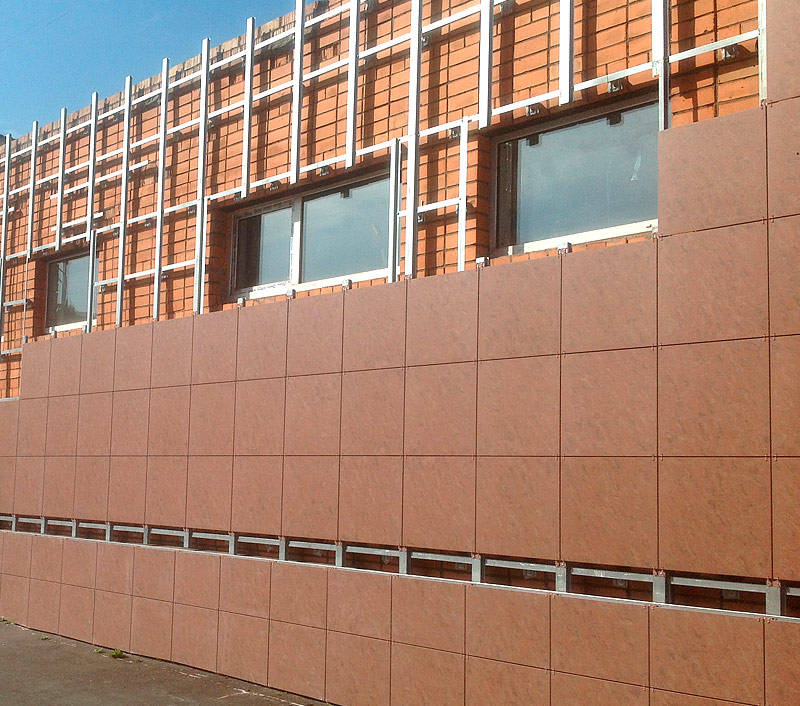
Material cost
Ceramic tiles are much more affordable - even designer collections of materials are sometimes much cheaper than today's fashionable satin, lappated or structural porcelain. However, matte porcelain stoneware can be somewhat cheaper, but because of its modest appearance it is far from always suitable for interior decoration.
The choice between the two materials in this case depends not only on preferences, but also on financial capabilities - most often, ceramic tile finish is much cheaper, despite the fact that the interior is very effective.
Design
Modern ceramic tile is an amazing variety of shades, textures and patterns. Production features allow you to perform almost any ornament on the surface of the material, and therefore the range of ceramic tile collections today is unusually wide.
As for porcelain stoneware, it is characterized by a much smaller selection of design options and colors. Structural material with different surface reliefs and glazed porcelain tiles with a bright pattern look elegant and expensive - but they also cost accordingly. If you need a stylish and harmonious interior decoration with a moderate budget, then ceramic tiles are still preferable.
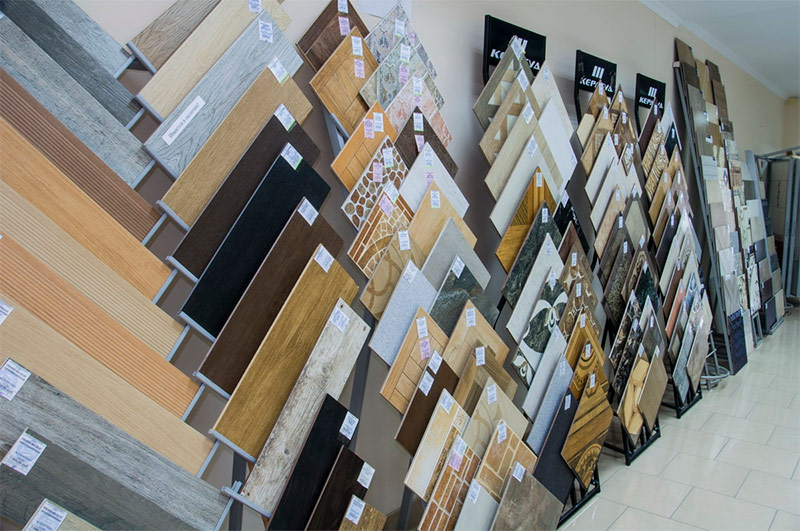
Weight
The minimum weight of one square meter of ceramic tile is approximately 10 kilograms. The weight of one square meter of porcelain tile of the same thickness is about 20 kilograms. This is due to the denser structure of the material, which does not allow any internal voids.
When laying the material on the floor, more weight is more likely an advantage, and therefore in some cases porcelain tile wins. However, it is still recommended to choose lighter materials for wall cladding - in this case, the cost of glue will be lower, and fixing the tiles will be more reliable. When using porcelain stoneware for wall decoration, it must be remembered that this is a very heavy material and the walls must have such strength that would allow all this to withstand.
Stacking difficulty
The sequence and technology of laying ceramic granite and ceramic tiles are approximately the same - however, in the first case, you should pay attention to the following nuances:
- the need for marking - this will save time and effort to create the necessary calculations;
- the complexity of processing and fitting - porcelain tiles are very difficult to cut, and therefore you should take care of the availability of special equipment;
- careful selection of the adhesive mixture - due to the large weight of the porcelain tiles, compositions with a special formula are needed;
- the need for additional fixation when installing porcelain stoneware on a horizontal surface.
Obviously, laying granite is more difficult than installing ceramic tiles.But when designing the floor, more weight and size of the material may be more advantageous.
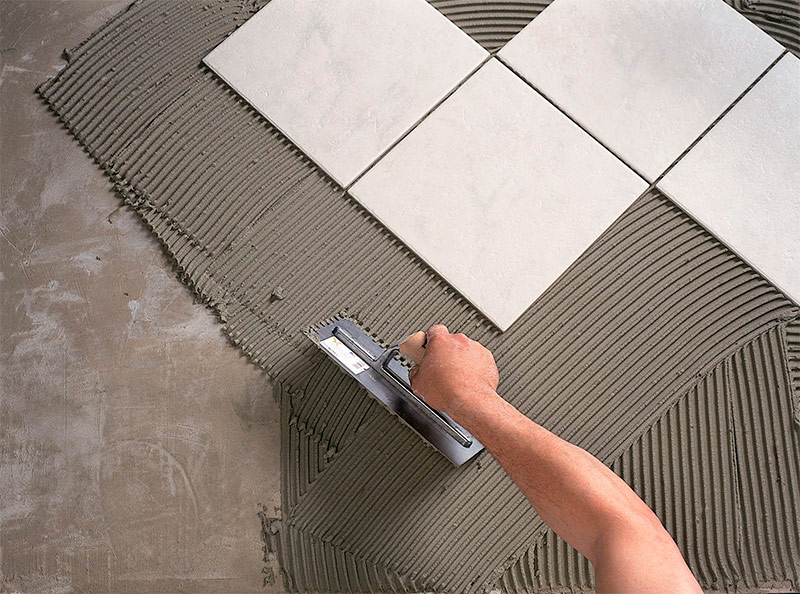
Comparison table of the main characteristics of porcelain stoneware and ceramic tiles
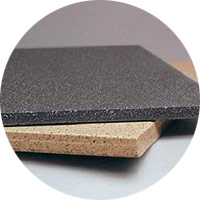 | 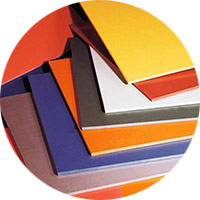 | |||||||
|---|---|---|---|---|---|---|---|---|
| Porcelain Tiles | Ceramic tile | |||||||
| Mohs hardness | 7 - 8 |
6 - 7 |
||||||
| Wear resistance and loss of appearance | Resistant to abrasion, does not change the appearance. |
Medium abrasion resistance changes appearance. |
||||||
| Water absorption,% | 0,05. |
1 - 2. |
||||||
| Frost resistance cycles | 100 - 300. |
50 |
||||||
| Weight 1 m2kg | About 20. |
About 10. |
||||||
| Design | The choice is limited. |
Huge selection of different options. |
||||||
| Stacking difficulty | Harder due to hardness and weight. |
Easier. |
||||||
| Material cost | More expensive. |
Cheaper. |
||||||
In which case is it better to use porcelain stoneware and ceramic tiles
The characteristics and features of porcelain stoneware and ceramic tiles make it possible to use them in various finishes, providing optimal design and functional solutions.
Ceramic tiles are recommended for use in the following situations:
#3.
The desire to create a unique interior - a variety of design options is one of the advantages of ceramic tiles.
#4.
The need for fast and reliable finishes - the process of laying ceramic tiles is somewhat simpler.
There are also many reasons to choose porcelain stoneware as a finishing material - including the following cases:
#1.
Finishing floors in public places with high traffic - shopping centers, offices, banks, clinics, catering establishments, educational institutions.
#2.
Facing the walls of buildings from the outside - due to its strength and frost resistance, porcelain stoneware is best suited.
When choosing, it is necessary to take into account a number of factors - including temperature and humidity indicators, throughput of premises, features of a design project, unique characteristics of materials and features of working with them. Porcelain tile and ceramic tile cannot be called rivals - rather friendly options for a durable and beautiful finish. By wisely choosing the material, you can achieve a perfect result with minimal effort and finance.

